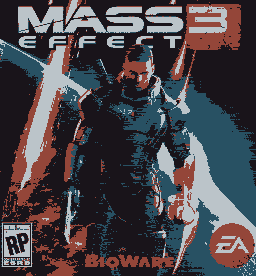And the things to consider.
Rollovers - Rollover
animations allow objects on the page to be interacted with simply by rolling
the mouse over them. This can be used on images, text and buttons, and opens up
a number of options to customise the page with more interesting visuals.
A downside to
this is how well they integrate with tablets or mobile phones, which is not
good at all. Since tablets uses a touch screen interface the concept of simply
rolling over the image doesn't work at all. This is less of a problem for drop down
menus that are activated by rolling over as tapping them usually suffices but more elaborate options may be a problem.
Animated attachments - A good way of advertising your product would be to send an email with some kind of animation attached, this is a good idea in theory because emails can be sent to multiple people at once, if it is an entertaining animation they could forward it to people they know and there you have an easy form of viral marketing. But with all the worries of dangerous attachments sent from emails there is a chance that your email will be either deleted or simply marked off as spam. But nowadays companies would much rather spend their time hosting these on trusted video hosting sites like Youtube or Viemo.
E-Cards - Designed as a healthy alternative to paper, e-cards are customisable cards that can be sent from person to person whatever the occasion. They were once popular but have been falling out of favour for some people, these days I've only ever seen them written with passive aggressive messages on them for dumb Internet "humour".
Output Devices - When making animations and of the such, you should remember that not everyone is going to be viewing it through a 1280x960 monitor. As such you should consider what size would be suitable for multiple screen sizes. While we're on the subject of finding a balance...
File size - It is important to make sure that when you upload your animation that the file size isn't to big. Failure to consider this could lead to such problems as long loading times and less than sufficient performance, this is also necessary if you were animating web banners which have a minimum of 50kb. But there are ways to minimize file size while your work doesn't suffer:
- Auto-crop - deletes any unwanted pixels that may be taking up memory; doing this lowers the overall amount of pixels that make up the picture, thus it will also cause finer details to suffer.
- Frame disposal - deletes the last frame before the next one plays, to my knowledge there are no side effects to this.
- Lower the bitrate by compressing the file, doing so will cheapen the quality so you need to strike a balance.
- Decreasing your colour depth will help lower the file size as it gives it less colours to process; however incessant use of this tool will cause the picture to turn monochrome, unless that is what you're looking for.

 One other use is for animated images, this is done by placing images in a sequence to create the illusion of movement (So just like regular animation). This is very popular on internet image boards as they are self playing and do not require the use of a video player. They are on the other hand fairly limited in their complexity due to its limited file size and colour, it can only ever render 256 colours at a time. They are also capable of transparent backgrounds.
One other use is for animated images, this is done by placing images in a sequence to create the illusion of movement (So just like regular animation). This is very popular on internet image boards as they are self playing and do not require the use of a video player. They are on the other hand fairly limited in their complexity due to its limited file size and colour, it can only ever render 256 colours at a time. They are also capable of transparent backgrounds.